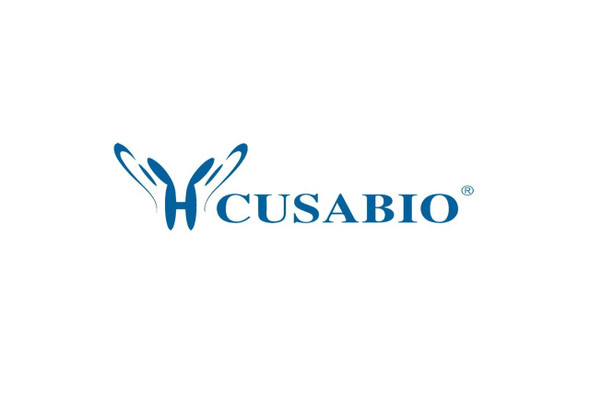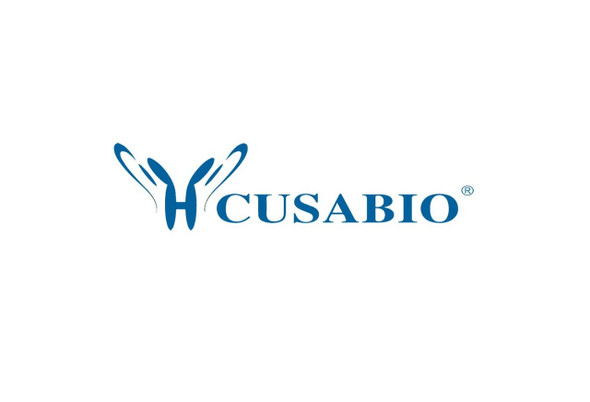Cusabio Human Recombinants
Recombinant Human F-box only protein 2 (FBXO2) | CSB-EP892326HU
- SKU:
- CSB-EP892326HU
- Availability:
- 13 - 23 Working Days
Description
Recombinant Human F-box only protein 2 (FBXO2) | CSB-EP892326HU | Cusabio
Alternative Name(s): F box gene 1; F box only protein 2; F box protein 2; F box protein only 2; F-box only protein 2; FBG 1; FBG1; Fbs 1; Fbs1; Fbs2; FBX 2; FBX2; FBX2_HUMAN; FBXO 2; FBXO2; Neural F box protein NFB42 ; Neural F-box protein; 42-KD; rat; homolog of; NFB 42; NFB42; OCP1; organ of Corti protein 1; Prpl4
Gene Names: FBXO2
Research Areas: Cell Biology
Organism: Homo sapiens (Human)
AA Sequence: MDGDGDPESVGQPEEASPEEQPEEASAEEERPEDQQEEEAAAAAAYLDELPEPLLLRVLAALPAAELVQACRLVCLRWKELVDGAPLWLLKCQQEGLVPEGGVEEERDHWQQFYFLSKRRRNLLRNPCGEEDLEGWCDVEHGGDGWRVEELPGDSGVEFTHDESVKKYFASSFEWCRKAQVIDLQAEGYWEELLDTTQPAIVVKDWYSGRSDAGCLYELTVKLLSEHENVLAEFSSGQVAVPQDSDGGGWMEISHTFTDYGPGVRFVRFEHGGQDSVYWKGWFGARVTNSSVWVEP
Source: E.coli
Tag Info: N-terminal GST-tagged
Expression Region: 1-296aa
Sequence Info: Full Length
MW: 60.3 kDa
Purity: Greater than 90% as determined by SDS-PAGE.
Relevance: Substrate recognition component of a SCF (SKP1-CUL1-F-box protein) E3 ubiquitin-protein ligase complex that mediates the ubiquitination and subsequent proteasomal degradation of target proteins. Involved in the endoplasmic reticulum-associated degradation pathway (ERAD) for misfolded lumenal proteins by recognizing and binding sugar chains on unfolded glycoproteins that are retrotranslocated into the cytosol and promoting their ubiquitination and subsequent degradation. Prevents formation of cytosolic aggregates of unfolded glycoproteins that have been retrotranslocated into the cytosol. Able to recognize and bind denatured glycoproteins, preferentially those of the high-mannose type
Reference: "A family of mammalian F-box proteins." Winston J.T., Koepp D.M., Zhu C., Elledge S.J., Harper J.W. Curr. Biol. 9:1180-1182(1999)
Storage: The shelf life is related to many factors, storage state, buffer ingredients, storage temperature and the stability of the protein itself. Generally, the shelf life of liquid form is 6 months at -20?/-80?. The shelf life of lyophilized form is 12 months at -20?/-80?.
Notes: Repeated freezing and thawing is not recommended. Store working aliquots at 4? for up to one week.
Function: Substrate recognition component of a SCF (SKP1-CUL1-F-box protein) E3 ubiquitin-protein ligase complex that mediates the ubiquitination and subsequent proteasomal degradation of target proteins. Involved in the endoplasmic reticulum-associated degradation pathway (ERAD) for misfolded lumenal proteins by recognizing and binding sugar chains on unfolded glycoproteins that are retrotranslocated into the cytosol and promoting their ubiquitination and subsequent degradation. Prevents formation of cytosolic aggregates of unfolded glycoproteins that have been retrotranslocated into the cytosol. Able to recognize and bind denatured glycoproteins, preferentially those of the high-mannose type (By similarity).
Involvement in disease:
Subcellular Location: Cytoplasm, Microsome membrane, Peripheral membrane protein, Cytoplasmic side
Protein Families:
Tissue Specificity:
Paythway: Proteinprocessinginendoplasmicreticulum
Form: Liquid or Lyophilized powder
Buffer: If the delivery form is liquid, the default storage buffer is Tris/PBS-based buffer, 5%-50% glycerol. If the delivery form is lyophilized powder, the buffer before lyophilization is Tris/PBS-based buffer, 6% Trehalose, pH 8.0.
Reconstitution: We recommend that this vial be briefly centrifuged prior to opening to bring the contents to the bottom. Please reconstitute protein in deionized sterile water to a concentration of 0.1-1.0 mg/mL.We recommend to add 5-50% of glycerol (final concentration) and aliquot for long-term storage at -20?/-80?. Our default final concentration of glycerol is 50%. Customers could use it as reference.
Uniprot ID: Q9UK22
HGNC Database Link: HGNC
UniGene Database Link: UniGene
KEGG Database Link: KEGG
STRING Database Link: STRING
OMIM Database Link: OMIM









